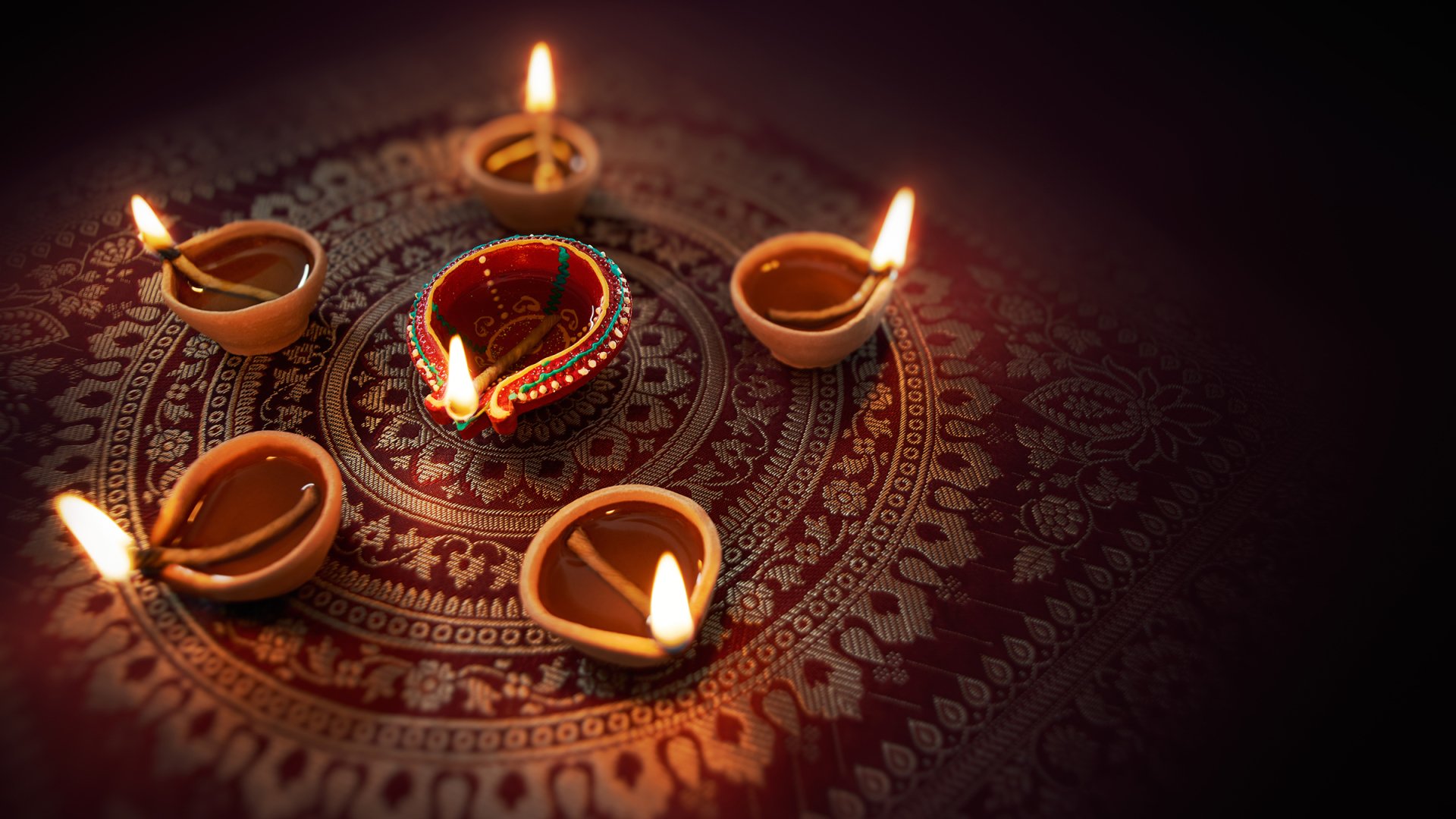
Diwali In 2022 – Date And Timings Of the Five Days
Amavasya Tithi – Begins 05:27 PM on October 24, 2022, and ends at 04:18 on October 25, 2021
Day 1 – October 21, 2022, Friday Ekadashi
Day 2 – October 22, 2022, Saturday Dwadashi
Day 3 – October 23, 2022, Sunday Trayodashi
Day 4 – October 24, 2022, Monday Chaturdashi
Day 5 – October 25, 2022, Tuesday Amavasya
Day 6 – October 26, 2022, Wednesday Bhai Dooj
The Five Days of Diwali: The Importance of the Festival
The Diwali festival encompasses and surrounds everyone, transcending all cultures and beliefs. The sole thing that distinguishes Diwali as India’s most well-known holiday is that. Everyone may find something to enjoy throughout the five days of Diwali, from nightlong card parties to educational poojas for religious believers.
Diwali’s five days are not just five days; rather, they continue for almost a full week, with five days of festivities and two days of scattered aftershocks. The harmony of these five principles, each of which manifests itself in a unique notion or ideal each day, is what makes this festival so beautiful. People therefore enjoy each five-day holiday with genuine intelligence in order to improve their quality of life.
From a local potter to a local jeweller, it is a genuine market celebration. Through this economic activity, much is accomplished, even the most marginalised or forgotten segments of society are assisted in finding a way to profit legally. Purchasing a Kuber yantra is another way to obtain Lord Kuber’s blessings.
Diwali Week’s First Day: Dhanteras
The start of Diwali week, or Dhanteras (Dhanvantari Trayodashi), signifies the formal start of the glittering celebrations. In accordance with the Hindu calendar, today is the thirteenth lunar day of the Krishna Paksha, the dark half of the month of Karthik.
Dhanteras is a significant holiday since it is said that Lord Dhanwantari brought the medicinal science of Ayurveda to Earth on this day to benefit Humanity. This day sees a lot of purchases, especially of jewellery, new apparel, and kitchenware, as well as gold, silver, and valuable stones.
Hindus wash and offer Yama Raj, the Lord of Death, a lighted deeya as they pray at dusk (sweets offered during worship). This sacrifice is made next to the Holy Basil plant, the Tulsi tree, or any other revered tree in the yard.
Additionally, you may reserve an online Lakshmi Puja that will be done especially for you by our erudite Pandits.
The Diwali celebrations officially begin today.
Second Deepavali Day: Choti Diwali
The second day of the Diwali holiday is known as Kali Chaudas, or Narak Chaturdashi. It is only Choti Diwali, a celebration observed in some regions of India on Deepavali’s second day.
On this day, Lord Krishna is said to have destroyed Narakasur’s demon, releasing the world from fear.
It is thought that in order to celebrate Diwali with vigour and compassion, the body must be rubbed with oil to relieve exhaustion, bathed, and given some downtime. Additionally, it is said that you shouldn’t leave your house or light any diyas on this day. However, in modern times, individuals visit each other on Choti Diwali to wish each other “a joyful, prosperous Diwali” and share presents and sweets.
Actual Diwali Day is the third day of Diwali Week.
The third of the five days of Diwali is when the actual celebration begins. It is the day when people worship Lord Ganesha and Goddess Lakshmi. Hindus seek the benefits of prosperity and wealth, the triumph of good over evil, and the victory of light over darkness by being pure and joining their families and Pandit (priest) in worshipping the Divine Goddess Lakshmi. Millions of crackers, fairy lights, and diyas are lit inside houses around India, while people are also burning candles and crackers outside.
Day 4 of Diwali Week is Vishwakarma Day, which follows Diwali.
Different traditions are used in India to commemorate Diwali’s fourth of five days. In western states like Gujarat, this day is celebrated with fanfare as Bestu Varas, the new year according to their calendar.
This day, when people worship their tools, weapons, and equipment, is frequently observed as Govardhan Puja Day and Vishwakarma Day in the northern Indian states. Consequently, on this day, most or all companies are closed. also known as Annakut nowadays.
Several thousand years ago, Lord Krishna transported the inhabitants of Vraja to Govardhan Puja. Since then, Hindus have celebrated Govardhan’s first Puja in honour of the Vraja people each year.
Bhai Dooj on the fifth day of Diwali Week
The fifth day of Diwali, also known as Bhai Dooj or Bhai Beej Day, is a holiday. On this day in the Vedic era, Yama (Yamraj, the Lord of Death) visited Yamuna with his sister. He bestowed a Vardhan (a blessing) on his sister, promising that whomever came to see her that day would be absolved of all sins and achieve moksha, or complete emancipation.
From that point on, the brothers go to their sisters and their kids to see how they’re doing, and the sisters make sweets as a token of their affection for them.
On this day, the five-day Diwali celebrations come to a conclusion.
Kartik Purnima: History And Meaning Of The Festival
On Purnima Kartik, rituals or pooja are performed in an effort to draw wealth. It is quite easy to obtain Lord Vishnu’s blessings, mata tulsi, etc. on Kartik Punam, a highly auspicious and holy day.
Currently, people pray at the banks of all holy rivers and take baths in them.
Kartik Purnima and Its Rituals: Their Importance
A well-known myth states that Lord Shiva and Lord Vishnu visit Earth in the Kartik month. Therefore, worshipping them on this day is thought to be very profitable by their followers. They go to temples, take holy river baths, and light diyas. Dev Diwali, the Diwali of the Gods, and Tripuri Purnima are other names for this day.
This holy month is named after Lord Kartikeya and is dedicated to him.
Tripuri Purnima — This festival commemorates Lord Shiva’s triumph over the Tripuri demons. This is why the day is known as Tripurari Purnima. The most important day for pleasing Lord Shiva is today. On this day, Lord Vishnu manifested as the Matsya (fish) avatar.
Devotees carry out a variety of necessary practises for health and happiness on this auspicious day of Kartik Poornima; some even marry tulsi and shaligram.
On the banks of the sacred river, devotees do a profound daan. It is thought that during the night of Kartik Poornima, profound daan can benefit from the “Ashwamedha Yagya.”
People also think that doing profound daan on Kartik Purnima helps the ancestors find redemption by enhancing their name, reputation, and prosperity.
People also worship “Trijata Laxmi” on this auspicious day. It is stated that Mata Sita was saved by the Trijata Lakshmi in the Ashok Vatika. Girls venerate Trijata Lakshmi in order to find the ideal life mate.
Devotees also distribute tulsi plants on this auspicious day of Kartik Poonam.
To celebrate this fortunate day and night, people go to festivals.
5 Days Of Diwali Summary
Dhanteras, Chaturdashi, Diwali, Govardhan Puja, and Bhai Dooj are the first five days of Diwali. The optimum time to launch a new business is around Diwali. We should worship Lord Ganesha and Goddess Laxmi today to bring luck, fortune, happiness, and success into our homes.
I’d like to wish you a very joyful and successful Deepawali!
